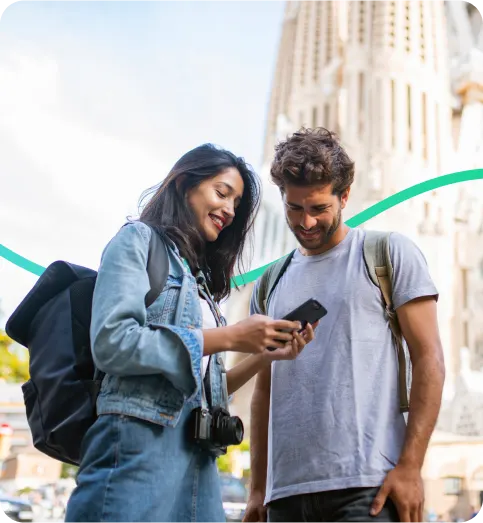Dominican Republic eTicket
From $59.99


Find the right Dominican Republic visa for your trip. Apply online with iVisa and skip the hassle.
How to apply for your Dominican Republic eTicket with iVisa
Answer a few simple questions, find out whether you need an eTicket, upload your documents, and pay securely. You can save your progress and come back anytime.
The Dominican Republic eTicket is our most popular travel document for this destination.
The Dominican Republic eTicket system is known for being difficult to navigate. Your photo must be the right size, and your passport scan must be clear.
Every application gets a full review by one of our visa experts. We check for errors and missing information.
We’re not the Dominican Republic government, but we submit your application to them and are here for you along the way if there are any problems.
Once your application is approved, we’ll notify you right away. Your travel document will be sent directly to your email.
💡Pro tip: Always double-check all your details. One wrong digit in your passport number will cause delays.

The Dominican Republic eTicket is a mandatory digital form required for both entry and exit in the Dominican Republic. It consolidates your Traveler’s Health Affidavit, Customs Declaration, and International Embarkation/Disembarkation into a single QR-coded document. It does not replace a visa when one is required.
The eTicket is not valid for work, study, or residency purposes. It is issued for a single trip only, and travelers must submit a new eTicket for every visit to the Dominican Republic.
The Dominican Republic tourist visa is intended for leisure travel, cultural experiences, and short-term participation in events such as conferences or festivals.
It is valid for 60 days from the date of issue and can be issued for either single or multiple entries. Travelers can extend their stay through the Migration Department, with additional fees applying after the first 30 days.
It is important to note that many nationalities are exempt from this visa requirement or may qualify for entry with an approved eTicket if they already hold valid US, Canadian, Schengen, or UK visas.
*Applications must be submitted in advance at a Dominican embassy or consulate.
The Dominican Republic business visa is designed for individuals traveling for professional purposes such as meetings, negotiations, investment exploration, or conferences, provided they do not engage in local employment.
The visa can be issued for 60 days as a single-entry or up to one year for multiple-entry, with each visit limited to 60 days. Extensions may be granted through the Migration Department on a case-by-case basis.
Applicants must apply through a Dominican embassy or consulate before traveling and provide a formal invitation or business justification.
*While this visa type is not currently available through iVisa, travelers can obtain complete details directly from the Ministry of Foreign Affairs website.
The Dominican Republic structures its visa policy by nationality, purpose of travel, and length of stay. Many visitors are visa-exempt, while others must apply in advance through a Dominican consulate.
Nationals of over 100 countries may enter visa-free for up to 90 days for tourism or business, provided they meet entry conditions. A mandatory $10 tourist fee is usually included in airfare; those arriving by land or sea may pay on arrival.
Non-exempt travelers must obtain a visa from a Dominican embassy or consulate, with categories covering tourism, business, study, work, residence, or diplomatic purposes.
All travelers, regardless of nationality, must complete the mandatory digital eTicket before arrival and departure. This form merges health, customs, and travel details into a QR code required by airlines and immigration officers. It does not replace a visa when one is required.
Because visa rules are updated regularly, travelers should confirm the latest requirements with a Dominican embassy or consulate before traveling.
Applying for a visa on your own can be confusing and time-consuming. iVisa simplifies the process, reduces errors, and gives you peace of mind

